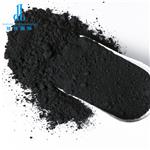Rhodium: Versatile Metal with Applications in Biology, Industry, and Safety Considerations
Dec 27,2023
General Description
Rhodium is a versatile and valuable metal with various industrial applications. Its complexes exhibit favorable attributes for use in complex biological environments, making it potentially useful in biological and medicinal fields. Rhodium is commonly used in the production of alloys, catalysts, high-temperature furnace windings, and as a surfacing material for reflectors and electrical contacts due to its corrosion resistance. It is also widely used in the automotive industry as a catalytic converter to reduce emissions. However, safety considerations should be taken into account, as exposure to rhodium and its compounds can cause respiratory sensitization and fire hazards. Overall, rhodium's unique properties make it an important material in multiple industries.

Figure 1. Rhodium
Versatility
Rhodium is a non-biological precious metal that has been underutilized in biological and medicinal fields. However, its complexes possess favorable attributes for application in complex biological environments. Rhodium complexes exhibit low oxophilicity and broad functional-group tolerance at all common oxidation states (+1, +2, +3), ensuring aqueous stability. This functional-group tolerance is crucial for the advancement of rhodium in catalytic organic synthesis and emerging areas like metal-organic frameworks. Although the use of rhodium-based methods in biological settings trails behind its application in organic chemistry, there is a surprising history of utilizing rhodium in biological contexts. As early as 1958, interactions between rhodium ions and the protein casein were reported. Subsequently, rhodium(II) complexes were investigated as antitumor agents or enzyme inhibitors. Recent studies have greatly enhanced our understanding of the structure and activity of rhodium in biological systems. 1
From Automotive Catalysts to Jewelry and Chemical Engineering
Rhodium is a rare, silvery-white metal with a variety of industrial and commercial applications. It is commonly used in the production of rhodium-platinum alloys for spinnerets, laboratory crucibles, catalysts, and high-temperature furnace windings. Rhodium is also used as a surfacing material for reflectors, electrical contacts, scientific instruments, and jewelry due to its excellent resistance to corrosion and wear. One of the main applications of rhodium is in the automotive industry, where it is used as a catalytic converter to reduce emissions. Rhodium is also used in the production of high-reflectivity mirrors for cinema projectors and searchlights, and as a corrosion-resistant electroplate to protect silverware from tarnishing. In addition, spongy or black rhodium is used as a catalyst in various organic hydrogenation and oxidation reactions, while rhodium coatings are often used with electrodeposited nickel parabolic reflectors. Rhodium is also a strong complexing agent that is widely used in chemistry and chemical engineering. Overall, the unique properties of rhodium make it an important material in various industries, including automotive, jewelry, and chemical manufacturing. Its widespread applications demonstrate the versatility and utility of this rare and valuable metal. 2
Safety Considerations
Rhodium has certain safety considerations that need to be taken into account. According to the NIOSH Pocket Guide, exposure to rhodium and its insoluble compounds in the form of metal fumes can potentially cause respiratory sensitization, targeting the respiratory system. In terms of fire hazards, it is important to note that rhodium may react violently or explosively when in contact with water. It can also ignite due to friction, heat, sparks, or flames. Some forms of rhodium can burn with intense heat and may even re-ignite after a fire is extinguished. Additionally, dusts or fumes of rhodium can form explosive mixtures in air, and containers of rhodium may explode when heated. These fire hazards should be handled with caution. In terms of health hazards, rhodium and other metals in its group (platinum, palladium, iridium, osmium, and ruthenium) are generally non-toxic in their metallic state. However, allergic reactions and occupational contact urticaria can occur when exposed to soluble halide salts, particularly in platinum (Pt), and osmium tetroxide. Hypersensitivity allergic reactions have been observed in susceptible individuals. Regarding fire potential, rhodium has a moderate fire potential when exposed to heat or flame. In powder form, it is flammable. In conclusion, while rhodium is generally non-toxic in its metallic state, precautions should be taken to avoid respiratory sensitization, allergic reactions, and potential fire hazards associated with this metal. 3
Reference
1. Ohata J, Ball ZT. Rhodium at the chemistry-biology interface. Dalton Trans. 2018 Oct 30;47(42):14855-14860.
2. Rhodium. National Center for Biotechnology Information, 2023, PubChem Compound Summary for CID 23948.
3. Rhodium. Haz-Map, Information on Hazardous Chemicals and Occupational Diseases, 72.
- Related articles
- Related Qustion
- Rhodium: Major Minerals, Chemistry properties and Major Uses May 29, 2024
Rhodium is a rare, silvery-white, hard transition metal.
- Rhodium complexes: activities and toxicity Aug 11, 2023
Rhodium complexes inhibit Aβ aggregation, JAK2 activity, and PPIs. More research needed for efficacy and safety. Cytotoxicity observed in mismatch repair-deficient cells.
- Difference Between Rhodium and Silver Sep 30, 2019
Rhodium is very hard as a metal; hence it is highly durable. It has a high reflectance (the measure of the proportion of light or other radiation striking a surface which is reflected off it). Rhodium metal does not easily form an oxide, ev
Ruthenium complexes have unique properties, making them attractive for biotechnology. Ongoing research aims to expand their applications beyond cancer treatment.....
Dec 27,2023APIOsilodrostat Phosphate (LCI 699) is prepared using imidazole salt as raw material and by reduction, alkylation, saponification and other reactions.....
Dec 27,2023InhibitorsRhodium
7440-16-6You may like
- Rhodium
-

- $6.00 / 1KG
- 2024-05-20
- CAS:7440-16-6
- Min. Order: 1KG
- Purity: 99%
- Supply Ability: 20TONS
- Rhodium
-

- $18.00 / 1kg
- 2024-05-11
- CAS:7440-16-6
- Min. Order: 1kg
- Purity: 99%
- Supply Ability: 100 tons
- Rhodium Powder
-

- $6.00 / 1KG
- 2024-04-28
- CAS:7440-16-6
- Min. Order: 1KG
- Purity: More than 99%
- Supply Ability: 2000KG/MONTH





